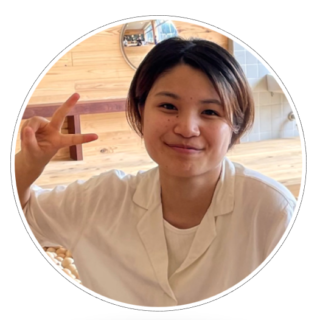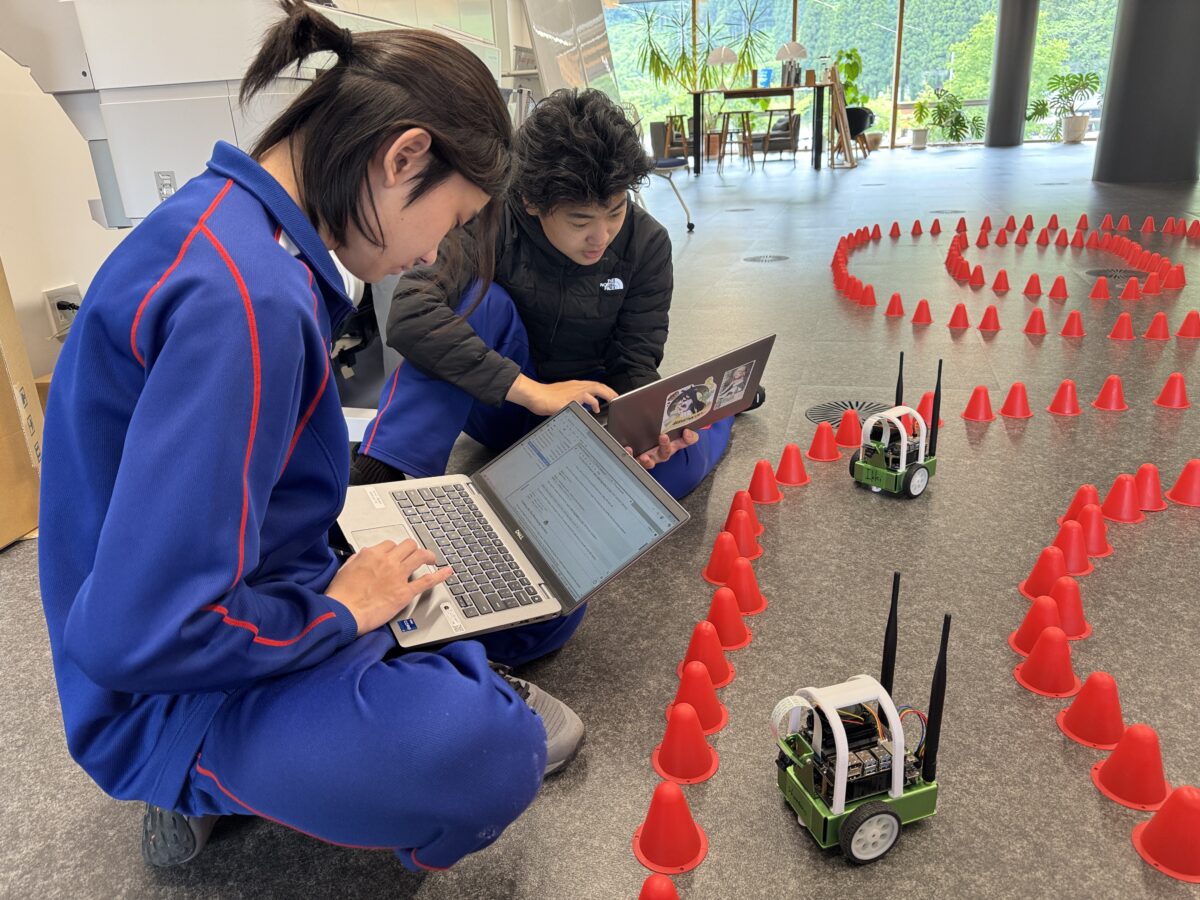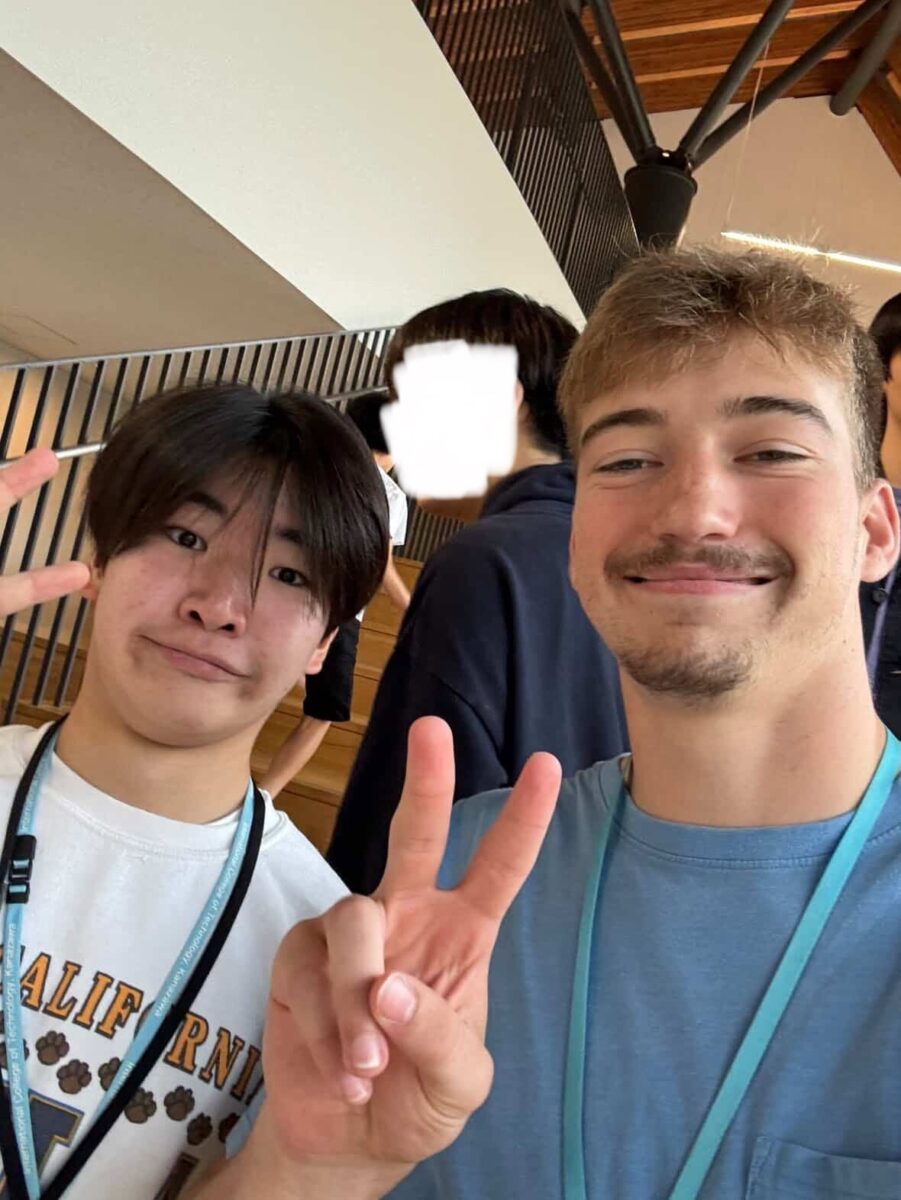 Hello, I’m Ruuna Nakazawa, a 3rd year student at ICT. Right now, it's the middle of winter in New Zealand, and it’s as cold as in January in Japan. Because of that, warm outerwear like a down jacket is essential when going outside. Today, I’d like to share a bit about my daily life here in New Zealand.
Hello, I’m Ruuna Nakazawa, a 3rd year student at ICT. Right now, it's the middle of winter in New Zealand, and it’s as cold as in January in Japan. Because of that, warm outerwear like a down jacket is essential when going outside. Today, I’d like to share a bit about my daily life here in New Zealand.
I’m staying with a host family that includes a host mother, a host father, and two host sisters who are around my age. When I first arrived, there were also two other housemates, but one of them recently returned to her home country. I had a lot in common with her, and even though we only spent a short time together, we became very close. I don’t talk with my host family extensively every day, but they all have a great sense of humor, and simply spending time together in the living room often brings lots of laughter. There's also a large dog at home, and I often play with it.

My host family‘s dogMy host family‘s dog
The house is located on a hill, and from the living room I can enjoy a wide view that includes the sea. One night, when the aurora appeared, I was able to watch the beautiful display right from the balcony. The house also has an electric piano and a garage with a dance floor, creating the perfect environment for me to fully enjoy my hobbies—playing the piano and dancing.

The aurora seen from the balconyThe aurora seen from the balcony
I have fewer classes here than I did during my 1st and 2nd years, and there are more holidays as well, so I now have more free time. Thanks to that, I’ve been able to spend plenty of time on my hobbies like piano, dance, and drawing. Speaking of dance, I’ve joined a dance club at Otago Polytechnic and take weekly lessons to improve my skills. I’m also taking an online course about AI, using my free time to deepen my interests.
One unique feature of New Zealand is its rich natural environment, and I’ve been going on hikes regularly to experience it. Dunedin has many well-maintained walking tracks managed by the local government, and I choose where to go by checking the city’s website. Each location offers different scenery and plants that I wouldn’t find in Japan, which makes each hike fascinating. As a dog lover, I also enjoy encountering dogs out on their walks.
While I’ve been enjoying these peaceful and fulfilling days, I also face some challenges. One of them is my English ability, especially speaking. Although I’ve gotten used to being surrounded by English, I still lack the confidence to actively start conversations on my own.
Now that a third of my study abroad experience has passed, I want to continue making the most of this warm host family environment and the free time I have, taking on new challenges little by little, and continuing to grow as a person.
Ruuna Nakazawa


Hello, this is Hayato Ogawa (Associate Professor) at International College of Technology. I teach Engineering Design 2 and Computer Skills 2 classes at Hakusanroku campus. As someone who enjoys watching science fiction movies about AI and the future—like 2001: A Space Odyssey—I’m always fascinated by how technology is imagined and sometimes feared. Instead of fearing AI, I believe it's important to understand how it works and how we can control it responsibly.
Several years have passed since the introduction of the JetBot project in the Computer Skills 2 class, and this hands-on activity remains an integral part of the curriculum at ICT. Despite the passage of time and the occasional loss of a few JetBots due to hardware failures or accidental falls during operation, the project continues to provide students with a valuable introduction and experience in both robotics and artificial intelligence.
Learning Through Doing: From Python to Collision Avoidance
The JetBot platform, built on the NVIDIA Jetson Nano microcomputer, offers students a practical introduction to AI-based robotics. Students begin by learning basic Python programming to control their robots, followed by creating datasets through image collection, and ultimately developing collision avoidance models. By using the onboard camera, each student trains their JetBot to navigate safely through obstacle courses, applying both theoretical knowledge and practical skills to understand how the quality of their dataset and models affects operation.
Over the years, this activity has not only strengthened students’ understanding of AI and robotics. It has also emphasized the importance of high-quality data, careful problem-solving, and system reliability, cultivating essential skills for future careers in engineering and technology. As I noted when the program was first introduced, AI technology is becoming mainstream; some students may eventually work in fields such as autonomous vehicles, where accuracy and data integrity have direct real-world implications.
Overcoming Challenges and Fostering Growth
One ongoing challenge remains the English proficiency required to navigate the official JetBot documentation and programming materials, which are written at a university level. However, with the consistent support and guidance of faculty members and learning mentors, students can overcome these language barriers while developing both technical and academic skills in the process.
While a few JetBots have been repaired along the way, each incident has provided additional learning opportunities, reinforcing the realities of working with physical hardware. The JetBot project continues to serve as a meaningful, multidisciplinary learning experience that combines programming, artificial intelligence, and practical troubleshooting. It remains a strong example of ICT’s commitment to preparing students for the demands of the modern technological landscape.
Hayato Ogawa
Hi, my name is Kotaro Higuchi, a 1st year student at the ICT. Recently, five high school students from the state of Missouri, USA, visited our campus. Today, I would like to share my memories with my buddy, Isaac.
I first met Isaac on the evening of Saturday, June 7th, 2025, the day they arrived at the Hakusanroku campus. My first impression of him was that he was tall and had such an adult aura, so I couldn’t believe that he is a high school student. However, when I tried to speak with him, I found out that he was interested in Japanese culture. While we were explaining our school, he listened aggressively and frequently asked questions.
I was relieved that we were able to become friends so quickly. The next day, we went on a trip to Kanazawa. During the bus ride, Isaac was curious about everything he saw in Japan. He said the rice plants growing in the paddy fields were beautiful and we had an exciting conversation about the differences between school life in Japan and America. In Kanazawa, he was impressed by the clever design of Kanazawa Castle and saying, “This castle must have been really hard to attack.” I thought that was a very interesting and unique observation. At the end of the trip, he became hooked on Japanese food, and he ate Dango and bought lots of Onigiri and snacks at 7-Eleven.
After that, we spent our weekdays together attending some classes. We also played basketball and American football after school, which made the rest of the time we shared really satisfying. I hope we can meet again someday.
Kotaro Higuchi
 Hello, this is Yuri Makada from the Hakusanroku Office. This time, I would like to introduce a project created by 1st year student Taiki Sasaki using Autodesk Fusion.
Hello, this is Yuri Makada from the Hakusanroku Office. This time, I would like to introduce a project created by 1st year student Taiki Sasaki using Autodesk Fusion.
In the Computer Skills IA course for 1st year students, students begin working with Autodesk Fusion to create 3D models right after entering ICT. In this class, students learn the fundamental computer skills necessary for engineers. Taiki Sasaki, a 1st year student, applied what he learned in class and spent two months creating a 3D model of a V8 engine! I've put together a video showcasing his work—please watch!
Yuri Makada

Hello, I am Stephanie Reynolds, an English Teacher in charge of the Advanced Reading & Writing courses at Hakusanroku campus. On Wednesday, June 18th, 2025, 5 international exchange students from Columbia, Missouri, USA joined my 1st year International College of Technology-Kanazawa (ICT) Advanced Reading & Writing IA class. The class typically has five students, so the American students and ICT students were perfectly matched 1-to-1 as partners for the class activities.
We began the class by discussing what both the ICT students and American students have been reading recently, in addition to the ICT students updating their reading logs. Over the 15-week semester, students in the Advanced Reading & Writing IA class are expected to log a minimum of 8 hours of free, independent reading time. They can include the time spent reading during learning sessions and other classes, as long as the content is in English. It was exciting and motivating to hear what others have been reading and what they thought about their chosen texts.
The next activity involved reviewing vocabulary and reading a 2-page article about the history and development of plastics. Students worked together with their partners to answer reading comprehension questions and practice the target skill of using inference to answer questions that are not directly addressed in the text.
The final task was a grammar exercise, in which all students answered a list of 10 questions and made sentences using the habitual past forms used to and would. The challenge was to decide when to use each type of form and how to adapt the forms to negative statements. The activity was written first, then students stood up and shared their sentences with one another while mingling in the classroom.
It was a wonderful opportunity to exchange language and cultural knowledge between ICT and American students. In the future, hopefully we can continue our exchange through writing emails and developing a deeper connection as pen pals.
Stephanie Reynolds















